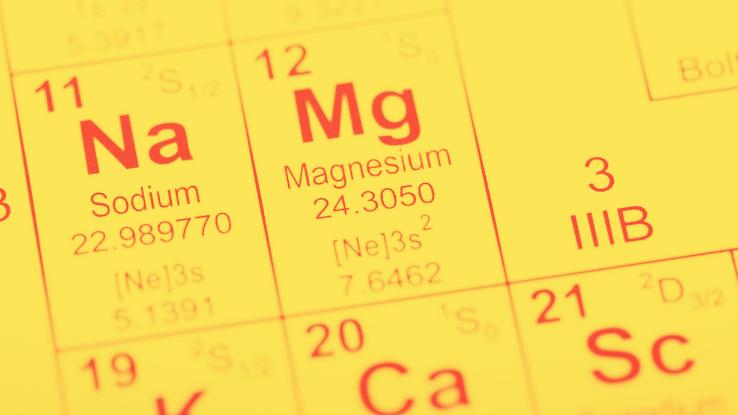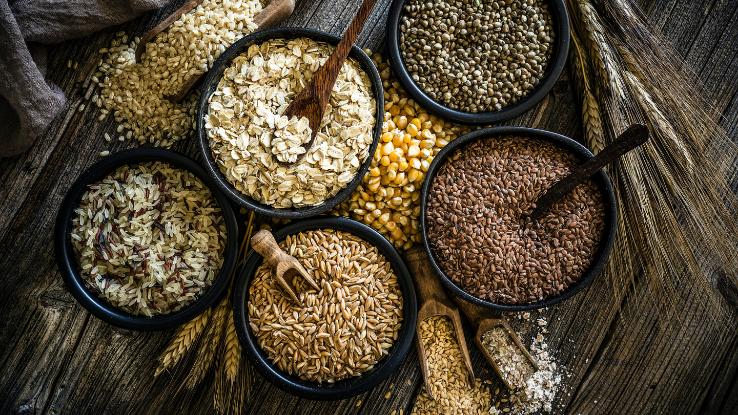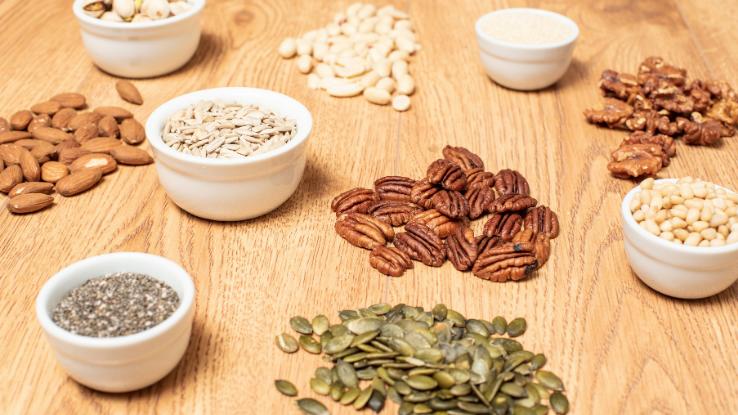
What do tofu, lava lamps, and Epsom salts have in common? The mineral known as magnesium. It helps coagulate tofu, creates the “lava” in the lava lamp, and is the active ingredient responsible for Epsom salt’s soothing properties. While it may not be as commonly discussed as something like calcium, magnesium is a vital mineral that your body cannot function without.
What Does Magnesium Do?
Here are some ways that magnesium supports a healthy body:

Bone Formation:
Our bones contain roughly two-thirds of our body’s magnesium overall. Magnesium is important in the formation of the physical bone structure, as it helps phosphorus and calcium binding.
Nerve and Muscle Function:
Magnesium is known to help relax nerve and muscle tension by serving as a chemical gate blocker that stops calcium from activating and tensing the muscle and nerves. Hence, muscle tension, soreness and spasms are common in cases of magnesium deficiency.
Protection of Cardiovascular System:
Epsom salts, which contain magnesium, are often used to treat a form of hypertension prevalent in pregnant people. Magnesium helps maintain a steady heart rhythm and healthy blood pressure, both of which protect the cardiovascular system.
Metabolic Functions:
Magnesium interacts with many enzymes within the body, participating in more than 300 biochemical reactions! It plays a vital role in energy metabolism and protein synthesis. It can help metabolize proteins, carbohydrates and fats, thus regulating blood sugar levels and protecting us from diseases such as diabetes.
Sources of Magnesium
Since our bodies cannot make magnesium, we have to get it from food or supplements. Consuming a diet with a variety of fruits, vegetables, grains, and low-fat dairy products should ensure you have plenty of magnesium to support a healthy body. About 30 to 40% of the magnesium consumed is actually absorbed by the body.

Fresh Vegetables:
Dark green vegetables, which are rich in chlorophyll, are great sources of magnesium. For example, spinach is an excellent source of magnesium. Cruciferous vegetables such as Swiss chard, kale, broccoli and mustard greens are also full of magnesium, along with turnip greens, green beans, cucumber, lima beans and celery. Although not green, summer squash and black eye peas are good sources. To reap the maximum amount of nutrients, be sure to avoid overcooking these vegetables.
Nuts and Seeds:
Almonds, cashews, peanuts and soybeans are valuable food sources of magnesium and can be easily incorporated into the diet. Roasted or raw nuts can make healthy snacks, and nut butters, such as almond and peanut butter, are widely available in grocery stores. Seeds that are high in the mineral include pumpkin seeds, sunflower seeds, sesame seeds, and flax seeds. For an extra boost of magnesium, toss a handful of flax or pumpkin seeds into your smoothie or onto your favorite salad.
Whole Grains:
Whole wheat products, such as buckwheat flour, contain a good amount of magnesium. The mineral is found in the bran, or outer husk of the grain, which is usually removed in refined flour or white bread. Whole grain cereals, such as oatmeal, are also high in magnesium. To incorporate whole grains into your diet, swap your usual white toast for whole wheat toast, or add some whole oats and bran flakes to your morning cereal. Reach for the healthy shredded wheat or bran flakes breakfast cereal instead of the sugary processed one. Some cereals might be fortified with magnesium, so don’t forget to check the nutrition label.
Other Food Sources | Dairy, Fish, and Fruit:
Dairy products such as low-fat milk and yogurt are good sources of magnesium. Tuna, mackerel, pollock and halibut are also excellent sources of magnesium. Fish is also a good source of protein, and getting enough protein in your diet helps your body absorb magnesium. Dried figs, bananas, avocados, prunes, and many other fruits give you a tasty magnesium boost. Bottled, tap, or mineral water even contains some magnesium. And — saving the best for last — one square of dark chocolate (with at least 75% cocoa or cacao) provides 15% of your daily requirement of magnesium!
Magnesium Supplements:
Magnesium supplements are available in a number of different forms, including magnesium oxide, magnesium, chloride, and magnesium citrate. How much magnesium your body actually absorbs from a supplement varies. For example, supplements that dissolve easily in water will be absorbed better in the stomach compared with supplements that are less soluble in water. Some antacids and laxatives also contain magnesium, to help aid digestion or relieve constipation.
How Much Magnesium Do We Need to Stay Healthy?
The Recommended Dietary Allowances for magnesium are 400 to 420 milligrams (mg) for men and 310 to 320 mg for women, from all sources (foods and supplements). One ounce of roasted pumpkin seeds provides 156 mg of magnesium and a half cup of cooked spinach is 78 mg of magnesium. Remember that only 30 to 40% of the magnesium consumed is available to your body but eating a healthy diet with plenty of vegetables, nuts, and grains should provide enough magnesium for optimal health.

Side Effects: Too Much or Too Little Magnesium?
Certain conditions or medications have been associated with decreases in serum magnesium levels, including digestive disorders, diabetes, alcoholism, or diuretic medications. When levels of magnesium are too low in the body, the body may show symptoms of deficiency.

The most common signs of deficiency include:
- Fatigue and weakness
- Muscle contractions and cramps
- High blood pressure
- Abnormal heart rates
- Headaches
- Depression, seizures or personality changes
- Nausea or vomiting
- Loss of appetite
If left untreated, magnesium deficiency can lower calcium and potassium levels in the blood and result in serious medical conditions. Too little magnesium has been linked to cardiovascular diseases, hypertension, anxiety disorders, migraines and osteoporosis.
While it is very unlikely that you would consume too much magnesium from natural food sources, people who take magnesium supplements can be at risk of magnesium overdose. Too much of the mineral can decrease calcium absorption in the body.
Signs and symptoms for magnesium toxicity, interestingly, are similar to the signs of magnesium deficiency. They include the following:
- Diarrhea
- Changes in mental status
- Extremely low blood pressure
- Nausea or vomiting
- Muscle weakness
- Difficulty in breathing
- Irregular heartbeat
- Loss in appetite
Symptoms of magnesium deficiency or toxicity may indicate absorption problems within the digestive and renal systems. Therefore, if you experience any of these warning signs, talk to your doctor to rule out other possible health problems.
Resource Links:
- “Magnesium” via National Institutes of Health
- “Nutrition and Healthy Eating” via Mayo Clinic
- “What You Should Know About Magnesium” via Harvard University
- “Magnesium Rich Food” via Cleveland Clinic
- “High Magnesium Food” via My Food Data





